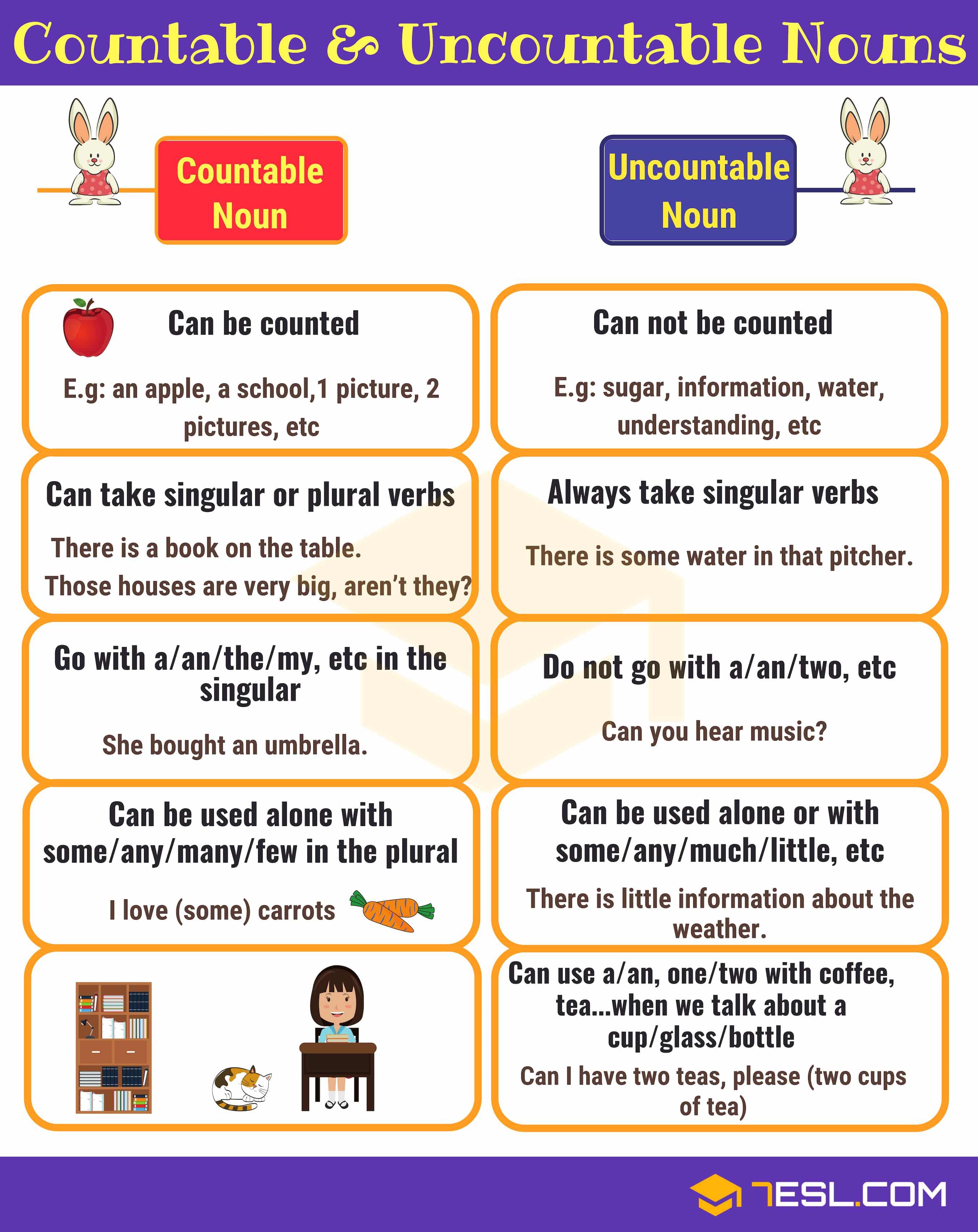Countable and Uncountable Nouns! If a noun can be counted, it is called a countable noun, however if it cannot be counted, we refer to it as an uncountable noun. These types of nouns are very commonly seen in the English language and for this reason, it is important that you are aware of how they function.
In this section, we are going to be showing you a variety of countable and uncountable nouns as well as showing you how they work in both spoken and written English.
What are Countable Nouns? | Countable and Uncountable Nouns
Learn countable nouns vs uncountable nouns in English with useful grammar rules, list and example sentences.
Countable and Uncountable nouns vary from language to language. In some languages, there are no countable nouns (e.g., Japanese). In addition, some nouns that are uncountable in English may be countable in other languages (e.g., hair or information).
- Countable nouns are individual objects, people, places, etc. which can be counted. (We use a/an or a number in front of countable nouns).
Examples:
an apple
a school
1 picture, 2 pictures, 3 pictures
2 men, 4 men, 8 men
- A countable noun can be both singular or plural. (Normally, we add -s/-es to make a countable noun plural.)
Examples:
apple – apples
tree – trees
box – boxes
- Use the singular form of the verb with a singular countable noun.
Examples:
There is a book on the table.
That student is excellent!
- Use the plural form of the verb with a countable noun in the plural.
Examples:
There are some students in the classroom.
Those houses are very big, aren’t they?
- We can use some and any with countable nouns.
Examples:
Some people pretend to despise the things they cannot have.
Please put up your hand if you have any questions.
- We only use many and few with plural countable nouns.
Examples:
Many students now see university as a stepping stone to a good job.
The country has relatively few cinemas.
- We can use a lot of and no with plural countable nouns.
Examples:
There is no friend as faithful as a good book.
The store has a lot of regular customers.
What are Uncountable Nouns? | Countable and Uncountable Nouns
- Uncountable nouns are materials, concepts, information, etc. which are not individual objects and can not be counted.
Examples:
information
water
understanding
wood
cheese
- Uncountable nouns are always singular. Use the singular form of the verb with uncountable nouns.
Examples:
There is some water in that pitcher.
That is the equipment we use for the project.
- Normally we do not use a/an with uncountable nouns; instead we use expressions such as a glass of water (a water), a piece of music (a music).
- Uncountable nouns can appear without any determiner.
Example:
Can you hear music?
- We can use some/any/much/little with uncountable nouns.
Examples:
I’ll put the kettle on and make us some tea.
Don’t dally along the way! We haven’t got much time.
- We only use much and little with uncountable nouns.
Examples:
He doesn’t usually drink much coffee.
There is little information about the weather.
- We can use a lot of and no with uncountable nouns.
Examples:
I have a lot of free time today.
It’s hard sailing when there is no wind.
Countable and Uncountable Nouns Images

Countable and Uncountable Nouns: Useful Rules & Examples
Nouns that Can Be Countable or Uncountable
Some nouns can be used as both countable or uncountable, usually with a difference in meaning.
Examples:
Fire
- fire = element (Most animals are afraid of fire.)
- fire = a burning pile (Firemen put out fires.)
Memory
- memory = the ability to remember (I have a very good visual memory.)
- memory = specific memories of past events (He’s trying to block out memories of the accident.)









0 Comments